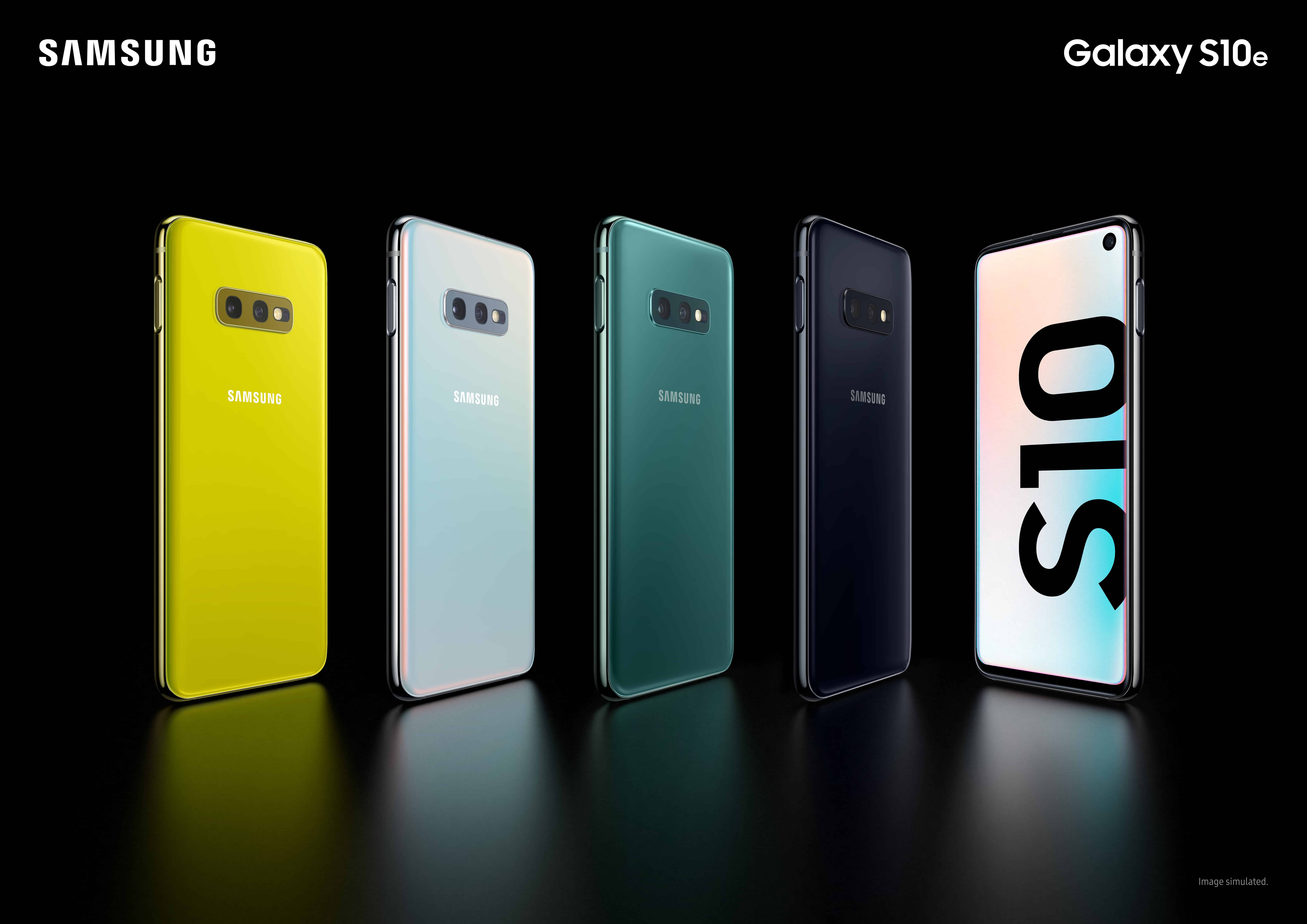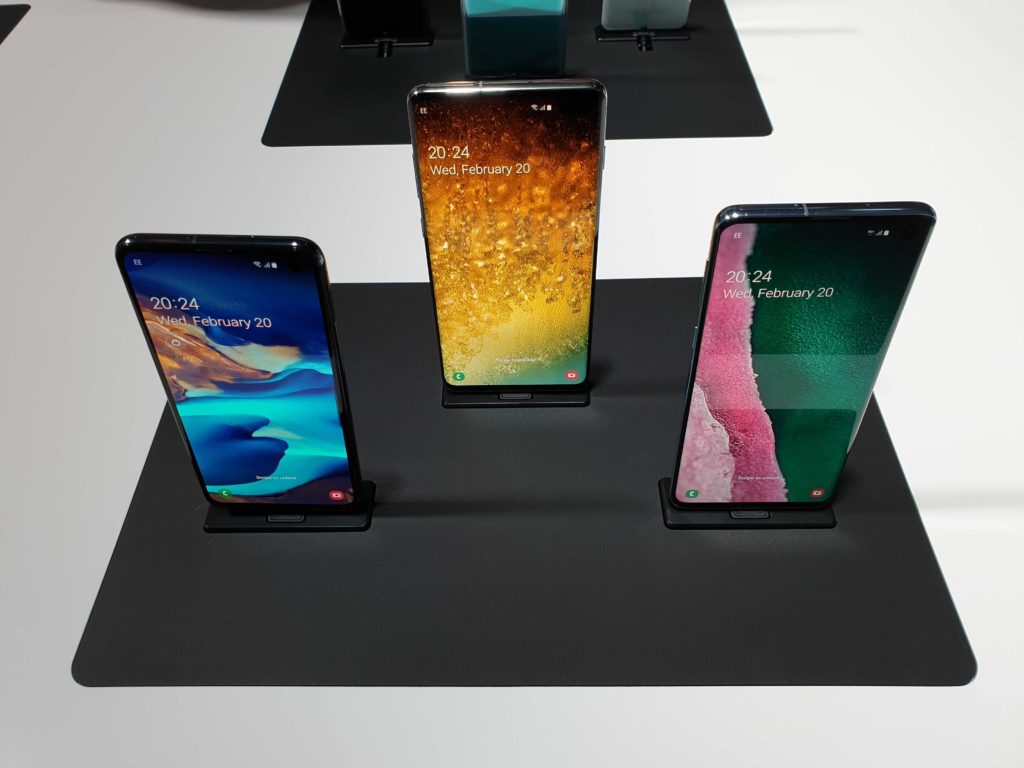
Following Apple’s footsteps, Samsung has also released three different variants of its flagship handset — the Galaxy S10 — this time around. With the cheapest S10 in its lineup, the Galaxy S10e, Samsung is taking on Apple’s iPhone XR. How does it fare to Apple’s ‘budget’ offering? What’s the difference between the two? Find out in this comparison.
The Galaxy S10e is essentially a slightly stripped down version of the Galaxy S10. Samsung has had to make some compromises to reach its slightly lower price tag. Its the same story with the iPhone XR, as it does not come with the same set of features as its bigger brothers, the iPhone XS and iPhone XS Max. So which is the better budget flagship? The Galaxy S10e or the iPhone XR? Read below to find out.

iPhone XR vs Galaxy S10e Comparison: Which One to Buy?
Design
Both phones are made of glass and aluminum, look premium, and carry an IP68 certification making them dust and water-resistant. The iPhone XR does look a bit tacky in promotional photos and videos due to the slightly larger bezels surrounding the display but that’s not much of an issue in real life.
The S10e looks slightly more modern than the iPhone XR since it uses the same Infinity-O punch-hole display at the front like the S10. The display is not curved at the edges but since it did not add much in terms of functionality, there’s little reason for one to complain here. While both phones are available in an array of colors, I feel that Apple offers better color choices than Samsung.
Display
- iPhone XR – 6.1-inch Liquid Retina LCD, 1,792×828 pixel
- Galaxy S10e – 5.8-inch FHD+ Dynamic AMOLED panel, FHD+ resolution
The Galaxy S10e comes with a 5.8-inch FHD+ Infinity-O Super AMOLED panel that’s HDR10 certified. Samsung is known to use the best quality OLED panels on its flagship devices and the Galaxy S10e is no exception here.
In comparison, the iPhone XR comes with a 6.1-inch Liquid Retina display that’s barely above 720p. While the LCD display panel itself is among the best out there, it is definitely the weakest part of the iPhone XR. The AMOLED panel on the Galaxy S10e offers better contrast, higher brightness levels and is a more lively display when compared to the XR.

Chipset
- iPhone XR – 7nm A12 Bionic chipset
- Galaxy S10e – 7nm Snapdragon 855 or 8nm Exynos 9820
Despite being cheaper versions of their premium siblings, both phones don’t compromise in the chipset department.
The Galaxy S10e comes with a 7nm Snapdragon 855 chipset in the U.S. or an 8nm Exynos 9820 chipset in rest of the world. While the new Snapdragon 855 chip offers major performance improvements and is a massive step up in terms of efficiency as well, it is simply not as powerful as Apple’s A12 Bionic chip. That all boils down to Apple’s excellent chip designing team that has been setting the benchmark for quite a few years with their mobile chips.
The Snapdragon 855 does feature a more powerful Adreno 640 GPU but all that power is irrelevant because Android simply does not have the same high-quality games as iOS. Plus, the iPhone XR has a lower-resolution display which taxes the GPU less.
Camera
- iPhone XR – 12MP camera with f/1.8 aperture, 1.4um pixel pitch, OIS, Smart HDR, Focus Pixels, Portrait mode with advanced bokeh
- Galaxy S10e – 12MP camera with variable f/1.5 and f/2.4 aperture, 1.4um pitch pixel OIS; Secondary 16MP f/2.2 ultra-wide angle shooter, Auto HDR, Super Speed Dual Pixel, Live Focus with adjustable bokeh effect
While the Galaxy S10 and S10+ come with a triple-camera setup, the S10e comes with a dual-camera setup due to its lower price tag. The iPhone XR, on the other hand, comes with a single-camera setup while its more expensive siblings — the iPhone XS and iPhone XS Max — come with a triple-camera setup.
The S10e and iPhone XR feature the same primary shooter. A 12MP 1.4um shooter with OIS, though the one on the S10e features dual f/1.5 and f/2.4 aperture. The wider aperture on the S10e gives it an edge in low-light scenarios, though the differences all boil down to how both company process the photos.
The Galaxy S10e has a secondary ultra-wide angle 16MP f/2.2 shooter that’s great for capturing landscapes and taking ultra-wide photos with a new perspective. If you are a photographer, you will like the ultra-wide angle sensor on the Galaxy S10e, though its the iPhone XR which has better photo editing apps.
At the front, the Galaxy S10e features a 10MP f/1.9 aperture selfie shooter while the iPhone XR features a 7MP TrueDepth camera. The S10e’s front camera has Dual Pixel Autofocus which makes a huge difference in terms of overall sharpness.
The improved selfie sensor on the Galaxy S10e is able to take better photos, especially in low-light. And it is also the world’s first phone to capture 4K videos from the front camera.
Do note that not everyone will like the selfie processing on the Galaxy S10e as it tends to apply a gracious amount of sharpening and face smoothening effect despite the feature being completely toned down. The iPhone XS also applies a beauty filter but it is nowhere near as bad as what Samsung does.
Biometrics
- iPhone XR – Face ID
- Galaxy S10e – Fingerprint scanner, Face unlock
The iPhone XR solely relies on Face ID while the Galaxy S10e offers face unlock as well as a traditional fingerprint scanner. Unlike the Galaxy S10, the S10e lacks an in-display fingerprint scanner and instead features a side-mounted traditional fingerprint sensor.
Unlike Face ID, face unlock on the Galaxy S10e is notably faster, though it does so by compromising security. For optimum security though, one can always fall back on the side-mounted fingerprint scanner.
Connectivity
- iPhone XR – Dual SIM/eSIM, LTE, Wi-Fi ac with MIMO, Bluetooth 5.0, VoLTE, NFC with reader mode
- Galaxy S10e – Dual SIM, 2Gbps LTE, Wi-Fi 6, Bluetooth 5.0, VoLTE, NFC, 3.5mm headphone jack
This is an area where the Galaxy S10e is the outright winner. The device comes with an LTE modem that’s capable of reaching download speeds of 2Gbps and features other advanced connectivity features for improved network performance. The Galaxy S10e also comes with Wi-Fi 6, the first smartphone in the world to do so.
The iPhone XR is simply nowhere as good. It does not even support Gigabit LTE like the iPhone XS. And that has a major difference in mobile data speeds. Plus, in areas with spotty network reception, the Galaxy S10e will fare far better than the iPhone XR.
The Galaxy S10e also features Wi-Fi 6 and a headphone jack which the iPhone XR lacks.
Storage
- iPhone XR – 64GB, 128GB, 256GB
- Galaxy S10e – 128GB, 256GB, microSD card slot
Another area where the Galaxy S10e is a clear winner. Despite being the cheapest Galaxy of the lot, even the base variant of the handset ships with 6GB RAM and 128GB storage. Plus, there’s a microSD card slot so that one can upgrade the storage on the cheap.
As for the iPhone XR, it comes with 3GB RAM and 64GB storage.
Battery
The iPhone XR comes with a 2,942mAh battery, while the Galaxy S10e comes with a bigger 3,100mAh battery.
Despite coming with a bigger battery, its the iPhone XR that offers better battery life than the Galaxy S10e. That’s because its LCD display is simply not as power hungry as the Super AMOLED display of the Galaxy. And that makes a huge difference in terms of battery life.
The Galaxy S10e does win in terms of charging times. While Samsung has not improved the wired charging speeds, it does at least ship the S10 with a 15W power adapter compared to the paltry 5W charger that Apple ships with the iPhone XS.
Both phones also support Qi wireless charging but the Galaxy S10e again wins here since it can charge at 12W wirelessly. That’s not as fast as the Mi 9 which can charge wirelessly at 20W but still faster than the iPhone XS which is limited to 7.5W.
Plus, the S10e also features reverse wireless charging a.k.a Wireless PowerShare which one can use to charge their Galaxy buds or other similar accessories featuring wireless charging. While the feature can also be used to charge other phones wirelessly, that’s a bit impractical since it would end up completely draining the battery of the phone itself.
Price
Both phones carry the same $749 price tag in the United States. Given the sheer number of additional features offered by the Galaxy S10e, I’d say it has a slightly better value for money ratio than the iPhone XR.
What do you think about the Galaxy S10e and the iPhone XR? Which one would you spend your hard earned money on? Drop a comment and let us know!